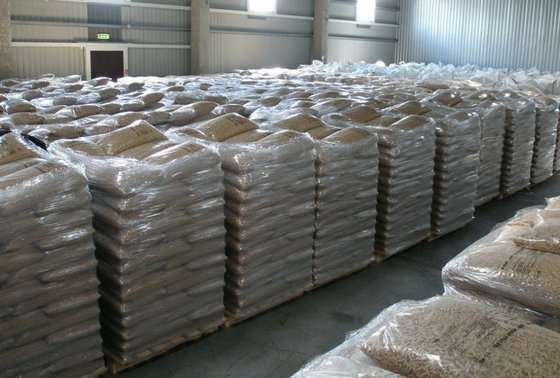Quality Assurance
In order to achieve a consistent and ideal heating process, excellent pellet quality is necessary. Since there are many fuel grades, it is crucial for owners of stoves and boilers to select the one that is ideal for their installations. Unwise decisions can cause an appliance to lose efficiency if they are not modified, as well as disrupt the combustion process and/or make maintenance more difficult. As compared to boilers with greater capacities, the tolerances involved with smaller boilers and stoves used in home premises are substantially lower. Larger industrial-sized pellet boilers can use lower-quality pellets without encountering the same problems because they are less prone to this problem.

Ash Content: The ash is the residue left after a complete combustion. The lower the ash content, the cleaner the pellet will burn and the more efficiently your boiler will function. Low ash content reduces routine cleaning and maintenance.
Ash Melting Temperature: Ashes showing low melting temperature will tend to melt in the hottest parts of the combustion chamber and solidify once they leave these areas. This solid ash, called “slag,” might create several issues including effecting the combustion process, blocking the equipment and increasing maintenance costs.
Length, Diameter and Bulk Density: Length and diameter are straightforward parameters while the bulk density must be explained as a measurement of the weight of pellet per volume of pellets (kg/m³). Having a pellet with a consistent length, diameter and bulk density is important, as wood pellet boilers are designed to use pellets with a standard energetic density (i.e. energy content per unit of volume). Using the wrong sized pellet will affect the energetic density. In case of excessive energetic density, the energy input of the boiler will be too high resulting in an overheating of the combustion chamber, while an insufficient energy density will affect the efficiency and might not generate sufficient heat for the system to work.
Dust: The small wood particles that can be found in pellet storage or bags, low dust content is an important factor as this might affect the storage, the handling, the maintenance, the combustion efficiency and the pollutant emissions.
Heating Value and moisture content: The lower heating value (LHV), expressed in kW/kg, reflects the energy content of the pellets. This is especially true for the LHV measure as received (a.r.) (taking into account the humidity of the fuel). The water content reflects the quantity of water contained in a defined quantity of pellets and is expressed in percentage. The lower the level of moisture in the wood pellets, the higher the heat output per kg. The usual LHV a.r. usually ranges from 4,6 to 5,1 kWh/kg.
Mechanical durability: This parameter reflects the pellet resistance to chocks. High mechanical durability means pellets are less prone to breakdown and crumbling during transport and in fuel feed augers, thus maintaining pellet consistency and reducing dust.
Nitrogen, Sulfur and Chlorine content: These parameters, expressed in percentage of the total weight of pellets, will affect the polluting emissions and the corrosion of the heating appliances.
Heavy metals: These parameters, expressed in mg/kg will affect the polluting emission, the combustion behaviour and the ash content of the pellets.
